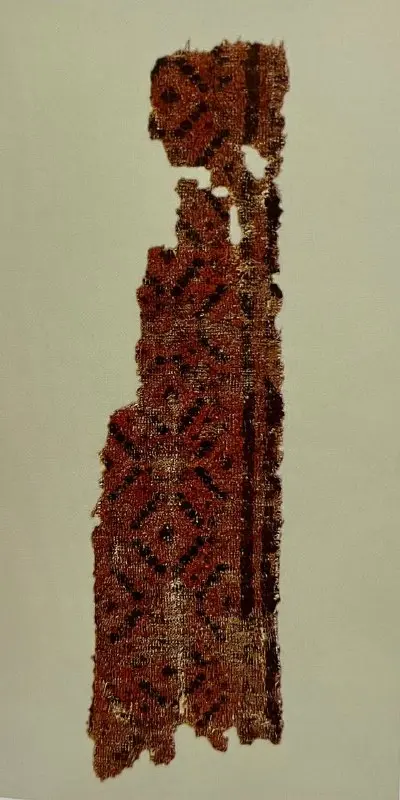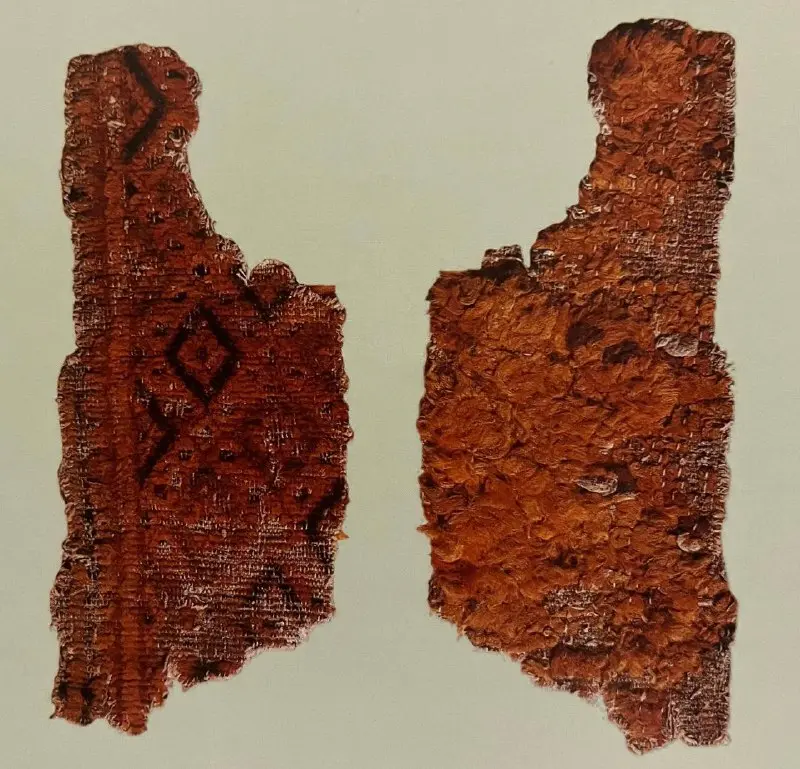Carpets of Arab Caliphs
Carpets of Arab Caliphs In 637 B.C. when Arabs occupied Ctesiphon, the victorious are amazed in front of a big and precious carpet that was called “Bahar-Khosro” or “Baharestan” based on legends. The First Khosro was the strongest king of Sassanid. Artaxerxes in Iran established Sassanid in
226 A.C. who entered the Parthian capital victoriously which was built on banks of Tigris.
The First Khosro commanded to build a great palace in Ctesiphon having a magnificent hall that the throne was in and was covered by an arch that resembled sky that was the simple of the global importance of the kingdom. The ruin of this palace is still magnificent and is famous as Kasra’s Arch. The first Khosro ruled from 531 to 579. Explanations of him are the border of reality and legend. He was handsome, nimble, warrior as Solomon and brave fighter. He became blue when cold in winter made him ignore the hunting.
Tabari, historian, in tenth century mentioned that the king ordered at that time to spread a big carpet named Baharestan with image of a garden in spring in the hall where throne was in. in this carpet, gems made floral emerald-green and ruby gardens and there were golden wheat clusters with silver rivers and gems in the background. Later a lot of carpets had been wove in Iran with the “garden” design, but Baharestan has never been seen anymore.

When Ctesiphon was occupied by Arabs, the commander of conquerors sent it to Caliphate Omar in Medina as a gift. And he divided it into different parts to distribute among conquerors as a spoil of war.
In next centuries, using gold and silver threads in carpet weaving that was called “Suzan Gherd” was con-tinued. Based on Masoudi, historian, in 861 Muta-wakkil, Abbasi Caliphate, was killed by a guard on a Suzan Gherd carpet and historian explained the carpet by details that a medallion and images of Caliphates adorned the carpet.
Markizi who has written the events of Egyptian Caliphate of Fatemi dynasty has mentioned similar features during explanation of Royal Treasury that they were adorned by images and texts. But there is a little information about their structure and origin.
Arabic historians mentioned almost exclusively production of South of Iran specifically Khuzestan and Fars. Karkub was mentioned more among these production centers where Suzan Gherd was wove in there.
According to geographers, Yaghout and Moghadda-si were the best woolen hand wove carpets of Fars and Jahrom, which were famous to produce carpets of mosque or “Saff”, and Fasa and Darabgerd, too. Fasa was celebrated for its Suzan Gherd and silky wove items
Carpets of Arab Caliphs persian rug fhciran
In southern borders of Iran, carpet was rarely admired. It’s worth mentioning hand wove carepts as Atabi and Makhmali of Tabriz and carpets of praying cloth in Amol beside Caspian Sea in north.
Historians quoted Bukhara and Khwarezm carpets in east and described Toon (present Ferdows in Southern Khorasan) in east of Iran. Naser Khosrow Qubadiyani mentioned four hundred carpet-weaving workshops in Toon in fifth century A.D. and wrote:
“Toon was a big city with river and canal. There were a lot of gardens in eastern side if the city with firm walls. It was said that there were four hundred car-pet-weaving workshops that wove carpet and …
In the Caucasus and Armenia, particularly specific red wool was used that the color was attained of the local natural color like purple shells.
Historians’ quotations uncover the importance of the carpets related to the Islamic culture in the centuries after Arab occupation but it’s not easy to define a clear framework. More than twenty different words were employed to refer to the hand wove items used in floor covering in Arabic, used in medieval sources and it’s not clear what techniques or decorations had been ap-plied.

Importance and wonderful distribution of hand wove items are not remained in Iran and Mediterranean banks while in Egypt some items are discovering that are kept due to dry climate. Archeologists in Al-Fos-tat found small hand wove items and carpets related to eighth- twelfth century knotted with different techniques and materials. And these finding prove development of weaving in Islamic era in comparison with medieval Egypt. Arabic historians such as Masoudi, Ibn Huqal and Yaghoubi that visited Egypt mentioned
“Bosut” and “Fors-ol-Qotu” that the word “Qotu” means “to cut” that’s a clear sign of using cutting tech-nique. Some Egyptian carpets have been kept due to dry climate from Fatemi era that have reGülar pile, knotted, cutted and geometrical adorning. They end to complicated surrounding frames and usually are adorned by designs similar to Kufi.
In one of the most famous items of Keir collection, which is related to ninth century A.C., there is an octagonal medallion in the center, surrounded with rec-tanGülar that are adorned with octagonal images or cross. And there are more samples in collections and museums.
Medieval Egyptian carpets enjoyed more technical variety in comparison with found carpets in other eastern historical sites and their common feature was colorful and asymmetrical knots from wool. Knots can be in a row in a single file or not. There are six rows of wefts passed between a course of knots and the next one.
Threads used for warp are different: cotton with natural color was preferred but in some parts, they had woolen structure.

Instead, cotton that its usage was usual in fifth and sixth centuries is not used at all. One part in Lamm collection has pile that has a noticeable height even on the back and this feature has been seen in the carpets of that century, which have been found in other oriental parts.
In ninth century, Egypt was connected with a commercial network by establishing a carpet production center, and these carpets, probably for these vast commercial exchanges, have been found in all Mediterranean parts and after some centuries, amazing Mamluki carpets were inspired from.
Some parts of knotted carpets of fist centuries after Arabs’ occupation have been discovered in other places that are equal with other textiles in their era from the viewpoint of technical elegance and decorative value.
Some evidence proves the usage of knotted carpets in Iran in Arabs’ Caliphates era. Iran was well known to produce silky hand wove items that silk was provided by the Silk Road in large amount. The items were in light colors that were skillfully knotted and had designs that were distributed inside or around circular medal-lions.

Hand-wove items were found in Moscevaja Balka in North Caucasus, which are keeping in Museum of Armitage in Saint Petersburg.
Exceptional richness of the findings of the cave-tombs acknowledges the frequency of transactions, either deals of silk form China to occident or wove products from occident to orient. Among a lot of findings in Moscevaja Balka, there are some parts of knotted woolen carpets with simple designs that have colorful parts. And there are carpets with more complicated designs that are rectanGülar and geometrical. They had enjoyed different colors that red is more dominant than the others. The part which is attributed to local weaving and wove items related to Syria and Egypt have been estimated for ninth century A.D. there are documents showing carpet weaving in Han era in East Turkistan, and based on historical evidence, after occupation of western areas under governing of Xiongnu, when he gave up, conquerors gathered carpets, rugs and felt carpets as high as mountains and Banchao, who became the governor of the area after occupation, was asked to purchase a large number of carpets from Kunduz and Kashgar.
There are other references of weaving and usages of carpet in the region in the travel accounts of a priest named Yuan Chuang who passed Xinjiang in eighth century and described the region and traditions in de-tails. He mentioned Hotan as Kusatana and described that people were busy with weaving and selling elegant piley carpets and felt carpets in large amount.
Therefore usage of carpet was common before Islam and there are proofs on production and usage of carpets during many centuries.
Carpets of Arab Caliphs wikipedia
